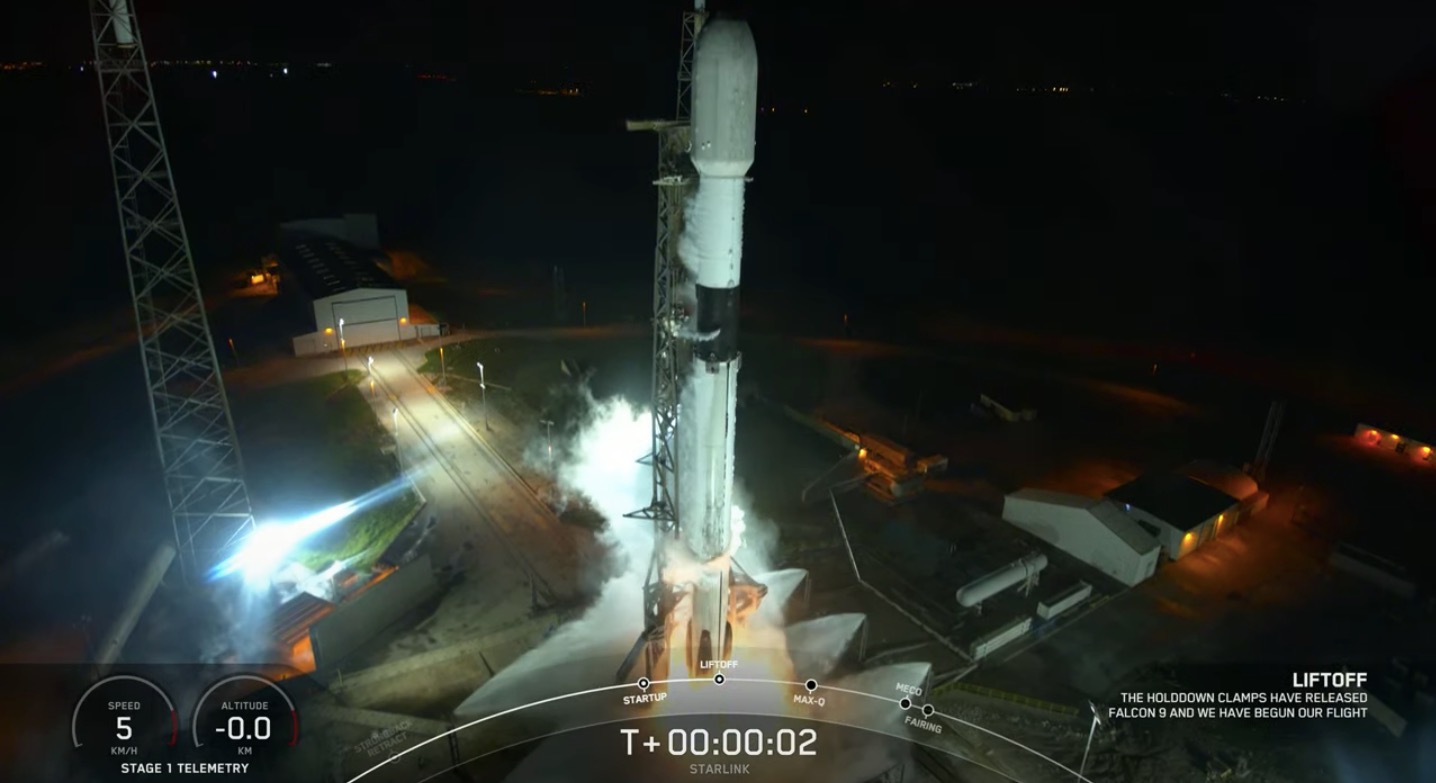SpaceX launched 54 more of its Starlink broadband satellites to orbit and landed a rocket on a ship at sea on Saturday night (Aug. 27).
A two-stage Falcon 9 rocket carrying 54 Starlink spacecraft lifted off from Cape Canaveral Space Force Station in Florida Saturday at 11: 41 p.m. EDT (0341 GMT on Aug. 28). That was about 80 minutes later than originally planned, as SpaceX waited for some bad weather to clear.
A little less than nine minutes after launch, the Falcon 9’s first stage came down to Earth for a landing on the SpaceX droneship A Shortfall of Gravitas, which was stationed in the Atlantic Ocean off the Florida coast.
Related: SpaceX’s Starlink megaconstellation launches in photos
It was the second launch and landing for this Falcon 9 first stage. The booster also helped send a robotic Dragon cargo capsule toward the International Space Station last December, according to a SpaceX mission description (opens in new tab).
Meanwhile, the Falcon 9’s upper stage continued hauling the Starlink satellites skyward, eventually deploying all 54 them into low Earth orbit about 15 minutes after liftoff as planned, SpaceX confirmed via Twitter (opens in new tab).
Saturday night’s launch was the 38th of 2022 for SpaceX, extending the company’s record for most orbital missions in a calendar year. It was the 24th mission of the year devoted to Starlink, SpaceX’s internet megaconstellation.
SpaceX has big plans for Starlink, as that aggressive launch cadence shows. On Thursday (Aug. 25), for example, Elon Musk announced a deal with T-Mobile to use Starlink to beam connectivity directly to smartphones.
That direct-to-handset service is expected to debut next year. It will employ Starlink Version 2 satellites, which will be much bigger and more capable than the Starlink satellites SpaceX has launched to date.
Editor’s note: This story was updated at 12: 10 a.m. EDT on Aug. 28 with news of the successful launch, landing and satellite deployment,
Mike Wall is the author of “Out There (opens in new tab)” (Grand Central Publishing, 2018; illustrated by Karl Tate), a book about the search for alien life. Follow him on Twitter @michaeldwall (opens in new tab). Follow us on Twitter @Spacedotcom (opens in new tab) or on Facebook (opens in new tab).

